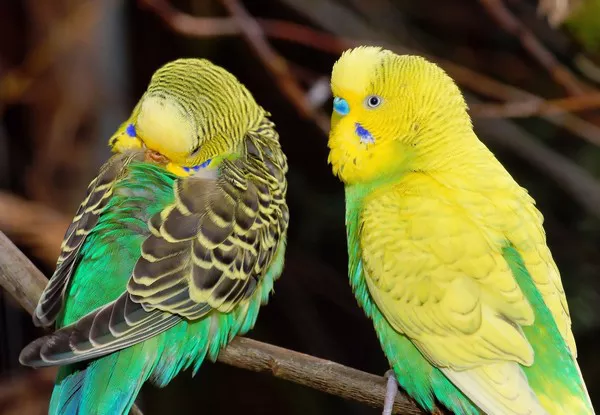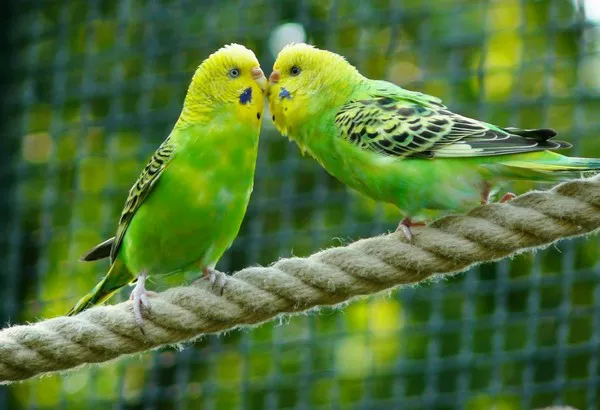When it comes to keeping fish in a community aquarium, one of the most frequently asked questions is whether bettas can live peacefully with tetras. This is a great question for those who want to create a harmonious environment for different species, but there are several factors to consider before deciding if these two fish species can coexist. Understanding the natural behaviors, temperament, and environmental needs of both bettas and tetras is crucial for making the right decision.
In this article, we’ll explore the question of whether bettas can live with tetras by looking at the characteristics of each species, their social behaviors, and tips for creating a suitable environment for both.
1. Understanding Bettas
Origin and Characteristics
Bettas, also known as Siamese fighting fish, are native to Southeast Asia. They are known for their vibrant colors, long flowing fins, and territorial nature. Bettas are generally solitary fish, and in the wild, they inhabit shallow waters like rice paddies, marshes, and slow-moving streams. They are labyrinth fish, meaning they have a special organ that allows them to breathe air, giving them an advantage in low-oxygen environments.
Male bettas, in particular, are highly territorial. They are known for their aggressive behavior, especially towards other males, and will often flare their fins and display aggressive postures. This aggressive nature is the primary reason why bettas are often kept alone in aquariums. However, females tend to be less aggressive, although they can still exhibit territorial behavior.
Behavior and Temperament
Bettas are famous for their aggressiveness, especially when it comes to other males. While they can be kept with other peaceful species, male bettas should generally not be kept with other male bettas. Even female bettas can sometimes be territorial and aggressive, although they are less likely to fight to the same extent as males.
Bettas may also display aggression toward fish that have long, flowing fins, as the betta may mistake them for another betta. This is why they are typically kept in tanks with other non-aggressive species that do not resemble their own kind. Bettas are best kept in tanks where they can establish clear territories and where there is enough space for other fish to avoid potential conflicts.
2. Understanding Tetras
Origin and Characteristics
Tetras are a diverse group of small, peaceful fish that come from rivers and streams in South America, Africa, and Asia. There are many species of tetras, but the most commonly kept in home aquariums are species like neon tetras, cardinal tetras, black neon tetras, and glowlight tetras.
Tetras are social fish that thrive in schools of six or more individuals. They are known for their peaceful nature, making them excellent candidates for community tanks. Tetras are small, colorful fish that often have shimmering or fluorescent markings, which make them a popular choice for aquariums.
Behavior and Temperament
Tetras are peaceful and non-aggressive, which makes them compatible with many species of fish. However, they do tend to be shy and prefer to stay in schools to feel safe. In a well-planted aquarium with plenty of hiding spaces, tetras will feel secure and exhibit more natural behaviors, such as swimming in tight schools and exploring the environment.
While tetras are not typically aggressive, they can sometimes nip at the fins of other fish if they feel threatened or stressed. This behavior is more common in crowded or improperly maintained tanks, but it can occur in any tank setting. Therefore, it’s important to keep tetras in a stable, well-maintained aquarium with other peaceful fish.
3. Can Bettas Live with Tetras?
Aggression of Bettas vs. Peacefulness of Tetras
The first major consideration when deciding if bettas can live with tetras is their respective temperaments. Bettas are known for their territorial and sometimes aggressive behavior, while tetras are peaceful schooling fish. The key to a successful pairing is finding a balance between these two characteristics.
Bettas are generally not very tolerant of other fish, especially if they perceive the other fish as a threat. Male bettas are more aggressive and may see tetras, particularly brightly colored or finned species, as rivals. However, many aquarium enthusiasts have found success in keeping bettas and tetras together, particularly if the right conditions are met.
Tetras, on the other hand, are peaceful and unlikely to challenge a betta directly. They are not prone to initiating fights, and their small size makes them less likely to intimidate a betta. However, they do have a tendency to nip at the fins of other fish, especially if they feel cramped or stressed. If a betta is already in a bad mood or feels threatened by the tetras’ movements, it might retaliate, leading to aggression.
Which Types of Tetras Are Best for Bettas?
Not all tetras are equally suitable for living with bettas. Choosing the right species of tetras is crucial for minimizing the risk of conflict. Some tetras are more peaceful than others and less likely to provoke a betta.
Neon Tetras: Neon tetras are one of the most popular species of tetras and are generally peaceful and non-aggressive. Their small size and peaceful nature make them a good match for bettas, although care should still be taken to monitor their interactions.
Cardinal Tetras: Similar to neon tetras, cardinal tetras are peaceful and vibrant in color. They tend to stay in schools, which may help them avoid direct confrontation with a betta.
Black Neon Tetras: These tetras are also small and non-aggressive. They may be a good choice for a betta tank, but as with all fish, it’s important to ensure they have enough space to avoid stressing the betta.
Glowlight Tetras: Known for their bright orange glow, glowlight tetras are another peaceful species that may work well with a betta. Their smaller size and tranquil nature make them good tankmates for bettas.
Avoid tetras that are too active, too large, or have long fins, as these characteristics may provoke a betta’s territorial behavior.
Tank Setup Considerations
The tank setup plays a significant role in whether bettas can live with tetras. Bettas are territorial creatures, so it’s important to provide plenty of space and hiding spots to help reduce the likelihood of aggression. Here are a few considerations for setting up a tank for bettas and tetras:
Tank Size: Bettas should be kept in tanks that are at least 5 gallons in size. A larger tank provides more space for both bettas and tetras, which can help reduce territorial behavior. A 20-gallon tank or larger is recommended for keeping multiple species of fish together.
Hiding Spots: Both bettas and tetras need hiding places to feel secure. Use plants, rocks, and decorations to create hiding spots throughout the tank. Bettas will use these spaces to escape from potential threats, and tetras will appreciate the security of having places to retreat.
Water Conditions: Bettas and tetras both prefer slightly acidic to neutral water with a temperature range of 75–80°F (24–27°C). Keep the water clean with regular water changes and use a filter to maintain water quality.
Aquascaping: Dense planting is important, as it mimics the natural environment of both species and helps keep fish calm. Live plants also provide additional hiding spaces and reduce stress for all fish in the tank.
Tankmates: In addition to tetras, consider other peaceful tankmates for your betta. Avoid species that are large, aggressive, or have long, flowing fins. Fish like Corydoras catfish or small plecos are often compatible with bettas and tetras.
How to Minimize Conflict Between Bettas and Tetras
While bettas and tetras can live together, there are several precautions you should take to minimize the chances of conflict.
Avoid Male Bettas: Male bettas are far more aggressive than females. If you’re planning to keep bettas and tetras together, opt for a female betta, as they are generally less territorial and less likely to attack other fish.
Monitor Behavior: When introducing tetras to a tank with a betta, monitor the fish closely for any signs of aggression. If the betta displays aggression toward the tetras, you may need to separate them or rearrange the tank to reduce territorial conflicts.
Ensure Sufficient Space: Give both species plenty of space in the tank. A crowded tank is more likely to lead to stress and aggression. As a general rule, provide at least 1 inch of fish per gallon of water.
Avoid Brightly Colored Tetras: Brightly colored fish can sometimes provoke aggressive behavior from a betta. If you’re concerned about aggression, choose tetras with more muted colors, like black neon tetras, rather than neon or glowlight tetras.
Conclusion
So, can bettas live with tetras? The answer is yes, but with important caveats. Bettas and tetras can coexist peacefully under the right conditions, but their compatibility depends on factors such as the species of tetra, the size of the tank, the sex and temperament of the betta, and the overall setup of the aquarium. By choosing the right types of tetras, ensuring a well-maintained tank, and monitoring interactions closely, you can create a peaceful community aquarium where both bettas and tetras thrive. Always be prepared to adjust your approach if any signs of aggression appear, and with the right care, your bettas and tetras can live harmoniously together.
Related Topics:
























